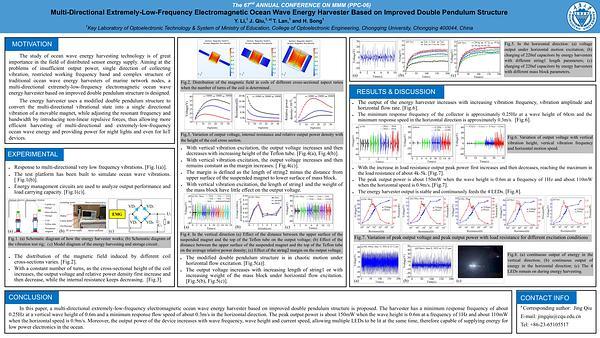Would you like to see your presentation here, made available to a global audience of researchers?
Add your own presentation or have us affordably record your next conference.
Numerical analyses should include the computation of magnetic hysteresis to estimate the performance of electric machines accurately. However, the finite element method
(FEM) requires significant time to simulate the hysteretic field because a hysteretic function modeled by, e.g., the Preisach model or the play model 1 must be called for each element and
time step.
The model order reduction (MOR) methods can effectively reduce the computation time of the FEM. This study aims to establish a new hysteretic MOR method for electric machines.
Specifically, we incorporate the hysteretic characteristics to the Cauer ladder network (CLN) method 2, a spatial mode decomposition technique showing superior convergence. It retains
physical interpretation, i.e., the inductances and resistances of the ladder network are directly computed from the decomposed modes. Therefore the nonlinear magnetic characteristics can
be directly incorporated 3.
The hysteresis effect is incorporated in the first inductor shown in Fig. 1. The magnetic fluxes flowing through the inductors are used as state variables. A semi-implicit time-marching
scheme is developed to reflect hysteretic properties without nonlinear iterations. Static I-φ loops are used to identify the scalar play model representing the first inductor. Those loops are
obtained by FE magnetostatic analysis, where the hysteretic behavior is calculated by the vector play model 1.
The reversible component is used to represent the second or later inductors, considering the characteristics of the minor loop 4. The resistances of the CLN are prepared as functions of the
first stage magnetic flux with anhysteretic approximation.
3. Numerical analysis
An iron-cored inductor was analyzed, where a PWM voltage input was applied to the coil. Fig. 2 shows the locus of total current I1 and the first stage magnetic flux φ1 obtained by the
proposed CLN method (solid red line), which agreed with the transient FEM result (solid black line) better than the conventional equivalent circuit (dotted red line).
References:
1 R. Mitsuoka et al., IEEE Trans. Magn., vol. 49, no. 5, pp. 1689–1692 (2013).
2 A. Kameari et al., IEEE Trans. Magn., vol. 54, no. 3, 7201804 (2017).
3 H. Eskandari and T. Matsuo, IEEE Trans. Magn., vol. 56, no. 2, 7505904 (2020).
4 Y. Shindo, T. Miyazaki and T. Matsuo, IEEE Trans. Magn., vol. 52, no. 3, 6300504, (2016).


